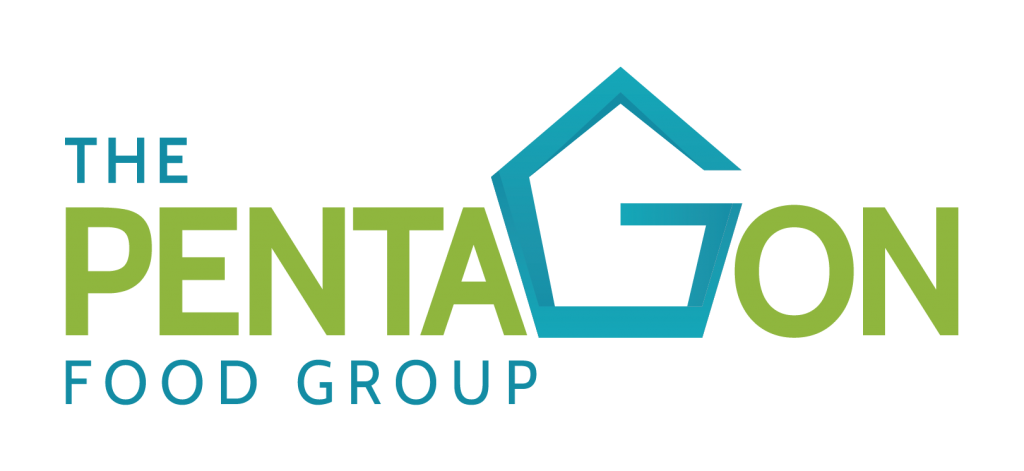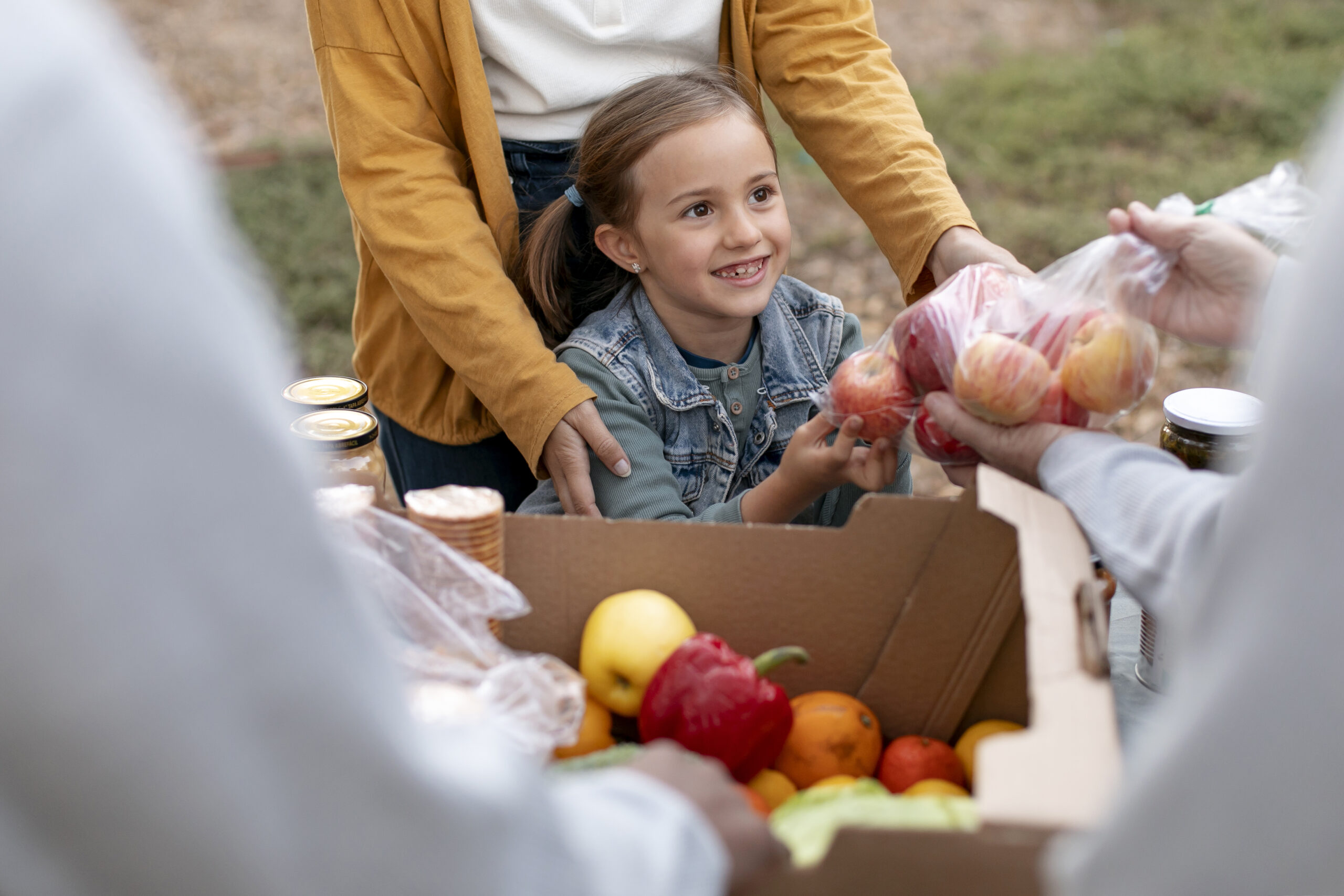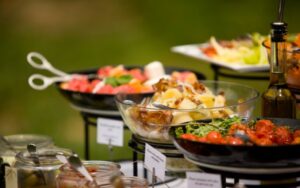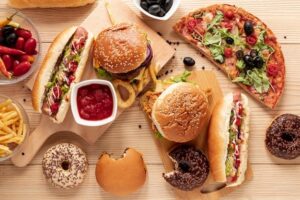Food safety is a crucial aspect of daily life, ensuring that the food we consume is free from contamination and safe to eat. However, during natural disasters, maintaining food safety becomes significantly more challenging. Events such as floods, hurricanes, earthquakes, and wildfires can disrupt power supplies, contaminate water sources, and damage infrastructure, all of which heighten the risk of food contamination.
In such trying times, it is essential to know how to keep food safe to prevent illness and ensure the well-being of yourself and your family. This blog post aims to provide you with essential tips and guidelines to maintain food safety during natural disasters. By following these recommendations, you can better prepare for and respond to these emergencies, minimising the risk of foodborne illnesses and ensuring that your food supplies remain safe to consume.
Understanding the Risks
Natural disasters are unpredictable events that can cause significant disruption to daily life. Common natural disasters include hurricanes, floods, earthquakes, and wildfires, each presenting unique challenges to maintaining food safety.
- Hurricanes
Hurricanes are powerful storms that bring heavy rainfall, strong winds, and storm surges. These can lead to widespread flooding, contaminating water supplies and food sources. Floodwaters often carry sewage, chemicals, and debris, which can easily infiltrate homes and businesses, making it unsafe to consume any food that has come into contact with the water. Additionally, hurricanes often result in extended power outages, causing refrigerated and frozen foods to spoil rapidly.
- Floods
Flooding, whether from heavy rainfall, river overflow, or coastal storm surges, seriously threatens food safety. Floodwaters can breach homes, farms, and storage facilities, contaminating any food it touches with pathogens, chemicals, and heavy metals. Furthermore, standing water and humidity promote the growth of mould and bacteria, which can further compromise food safety.
- Earthquakes
Earthquakes can cause structural damage to homes, buildings, and food storage facilities. This damage can lead to the contamination of food supplies through broken pipes, ruptured sewage lines, and debris. Additionally, earthquakes often disrupt power supplies, which can result in the loss of refrigeration. Without power, perishable foods can quickly become unsafe to eat. Earthquakes may also damage infrastructure, making accessing clean water for food preparation and personal hygiene difficult.
- Wildfires
Wildfires can destroy vast areas, including homes and agricultural land. The intense heat and smoke from wildfires can compromise the integrity of food packaging, leading to contamination. Ash and soot can infiltrate food storage areas, rendering food items unsafe. Wildfires also frequently cause power outages, which can result in the spoilage of refrigerated and frozen foods. The displacement caused by wildfires can also force individuals to rely on emergency shelters where food safety practices may be harder to maintain.
Preparing Before a Disaster
Preparation is key to maintaining food safety during natural disasters. By taking proactive steps, you can ensure that you have safe food and water supplies to sustain you through the emergency.
- Emergency Kit Essentials
- Non-perishable food items: Stock up on canned goods, dried fruits, nuts, and other non-perishable items that do not require refrigeration and have a long shelf life. These items should be easy to prepare and nutritious.
- Manual can opener: Ensure you have a manual can opener to access canned foods, as electric openers will be useless during power outages.
- Bottled water: Store at least one gallon of water per person per day for at least three days. This water is essential not only for drinking but also for cooking and basic hygiene.
- Proper Storage Techniques
- Store food in airtight containers: Keeping food in airtight containers helps protect it from pests and environmental contaminants. It also preserves the freshness of the food.
- Keep food in a dry, cool place: Store your food supplies in a location that is less likely to be affected by temperature fluctuations and moisture. A dry, cool place helps extend the shelf life of your food.
- Label and date food items: Clearly label and date all food items so you can keep track of their shelf life and consume them before they spoil.
- Backup Power Solutions
- Generators: Consider having a generator to keep your refrigerator and freezer running during power outages. Ensure you have enough fuel to run the generator for several days.
- Coolers with ice packs: Keep coolers and ice packs on hand to maintain a safe temperature for perishable foods if you lose power. This can be a temporary solution until power is restored.
- Thermometers for checking food temperatures: Use thermometers to monitor the temperature of your refrigerator, freezer, and coolers. The refrigerator should be below 40°F (4°C), and the freezer should be at 0°F (-18°C) or lower. This helps ensure that your food remains safe to consume.
During the Disaster
Natural disasters can create chaotic conditions that make maintaining food safety a significant challenge. During such times, it is important to adhere to best practices for managing power outages, ensuring water safety, and handling food properly to prevent contamination and illness.
- Power Outages
Power outages are a common consequence of natural disasters, and they can pose a severe risk to food safety. Here’s how to manage your food supplies during a power outage:
(i) Keep refrigerator and freezer doors closed as much as possible
The more frequently you open your refrigerator and freezer, the quicker the cold air will escape, raising the internal temperature. By keeping the doors closed, you can help maintain a safe temperature for as long as possible.
(ii) Use food in the refrigerator first, then freezer, then non-perishables
Start by consuming perishable foods from the refrigerator, as they will spoil the fastest. Next, use items from the freezer. Well-frozen food can remain safe for up to 48 hours if the freezer is full and 24 hours if it is half full. Lastly, turn to non-perishable items such as canned goods, dried foods, and other shelf-stable products once perishables are depleted.
(iii) Monitor food temperatures
Use a food thermometer to check the temperature inside your refrigerator and freezer. The refrigerator should be below 40°F (4°C), and the freezer should be below 0°F (-18°C). If the temperature rises above these levels for an extended period, the food may no longer be safe to eat.
- Water Safety
Water contamination is another significant concern during natural disasters. Follow these guidelines to ensure your water is safe:
(i) Use bottled water for drinking, cooking, and washing
Bottled water is the safest option during a disaster. Ensure you have an ample supply for drinking, cooking, and basic hygiene. Avoid using any water that may be contaminated.
(ii) Boil water if advised by authorities
If local authorities advise boiling water to make it safe, bring it to a rolling boil for at least one minute (three minutes at higher altitudes). Boiling effectively kills most types of bacteria, viruses, and parasites that could be present.
(iii) Avoid using contaminated water for food preparation
Do not use water that is cloudy, has an unusual odour, or has been exposed to floodwaters for cooking, cleaning, or washing food. Use bottled or boiled water instead to avoid contamination.
- Safe Food Handling
Proper food handling is essential to prevent foodborne illnesses, especially when conditions are less than ideal. Follow these practices to ensure safe food handling:
(i) Wash hands and surfaces often
Regularly wash your hands with soap and clean water, especially before handling food. If clean water is not available, use hand sanitiser. Clean and sanitise surfaces, utensils, and cutting boards to prevent cross-contamination.
(ii) Separate raw and cooked foods
Keep raw meat, poultry, and seafood separate from ready-to-eat foods such as fruits, vegetables, and cooked items. Use separate cutting boards and utensils for raw and cooked foods to avoid cross-contamination.
(iii) Cook food to the right temperatures
Ensure that all foods are cooked to their recommended internal temperatures to kill any harmful bacteria. For example, cook poultry to at least 165°F (74°C), ground meats to 160°F (71°C), and fish to 145°F (63°C).
(iv) Use clean water and cooking utensils
Always use clean, safe water and sanitised cooking utensils. Avoid using any equipment or water that could be contaminated, as this can lead to foodborne illnesses.
By following these guidelines during a natural disaster, you can significantly reduce the risk of food contamination and ensure that your food remains safe to eat. Maintaining vigilance and adhering to best practices for food safety can help protect you and your family during these challenging times.
After the Disaster
Once the immediate threat of a natural disaster has passed, it is essential to carefully assess and manage your food supplies to ensure safety. This includes evaluating the condition of perishable items, thoroughly sanitising your kitchen and equipment, and restocking and updating your emergency supplies.
- Assessing Food Safety
Discard perishable food: Throw away any perishable food that has been above 40°F (4°C) for more than two hours.
Check for spoilage:
- Look for unusual odours.
- Check for discoloured or abnormal textures.
- Discard anything that appears suspicious.
Discard contaminated food: Get rid of any food that has come into contact with floodwater or debris, as it is likely contaminated..
- Sanitising Equipment
Clean surfaces and utensils: Wash with soap and clean water.
Sanitise with bleach solution:
- Mix one tablespoon of unscented liquid bleach with one gallon of water.
- Apply the solution to countertops, cutting boards, dishes, and utensils.
- Let the solution sit for at least one minute.
- Rinse with clean water.
Focus on contaminated areas: Pay extra attention to areas/items that contacted floodwater or debris; thoroughly sanitise or discard if necessary.
- Replenishing Supplies
Restock emergency supplies:
- Replace used non-perishable food items.
- Replenish bottled water.
- Restock any other essentials that were depleted.
Review and update emergency plan:
- Reflect on wh at worked well and what didn’t.
- Increase stock of specific items if necessary.
- Invest in better storage solutions.
- Update the list of emergency contacts.
Enhance preparedness: Use lessons learned to improve your readiness for future emergencies.
Special Considerations
Vulnerable Populations
- Infants:
(i) Use ready-to-feed formula or prepare formula with bottled water.
(ii) Avoid homemade baby food unless you are certain of its safety and proper preparation.
(iii) Keep extra supplies of baby food, formula, and other necessities.
- Elderly:
(i) Ensure elderly individuals have easy access to safe, non-perishable foods.
(ii) Monitor their food and water intake to prevent dehydration and malnutrition.
(iii) Assist with food preparation and sanitation to minimise risk of contamination.
- Individuals with compromised immune systems:
(i) Use bottled water for drinking and food preparation.
(ii) Avoid raw or undercooked foods, as they are more susceptible to contamination.
(iii) Follow strict hygiene practices, including frequent handwashing and sanitising food preparation areas.
Pets
- Ensure pet food and water safety:
(i) Provide pets with bottled or boiled water to prevent exposure to contaminants.
(ii) Keep a supply of pet food that is separate from human food to avoid cross-contamination.
- Store pet food in sealed containers:
(i) Use airtight containers to store pet food, protecting it from pests and moisture.
(ii) Label and date pet food to ensure it is used within a safe period.
- Emergency pet supplies:
(i) Include pet food, water, and any necessary medications in your emergency kit.
(ii) Ensure pets have a safe, designated area away from contaminated zones.
Read More: The Impact of Climate Change on Food Production & Distribution in 2024
Conclusion:
Maintaining food safety during natural disasters is crucial to protecting your health and well-being, as these events can compromise food supplies through power outages, water contamination, and structural damage, thereby increasing the risk of foodborne illnesses. By understanding these risks and taking proactive measures, you can ensure that your food remains safe to consume, even in the most challenging conditions. Throughout this blog post, we have highlighted essential tips and guidelines to help you prepare for, respond to, and recover from natural disasters, from creating an emergency kit and storing food properly to handling food safely during power outages and sanitising equipment post-disaster. These practices are vital to safeguarding your food and health. Preparation is key to mitigating the impact of natural disasters on food safety. By planning ahead, you can significantly reduce the risk of food contamination and ensure that you and your family have access to safe food and water.
Stay informed about potential threats in your area and follow updates from local authorities. Regularly review and update your emergency plans and supplies to ensure you are ready for any eventuality.






